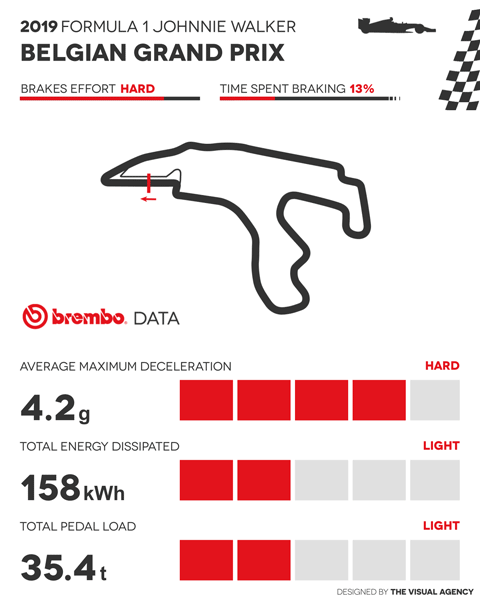Nestled in the Ardenne hills, it is unanimously considered the most complete track in the World Championship for its combination of fast turns, blind corners, elevation changes and infinite straightaways.
This is the 52nd time Formula 1 has returned to the track, but the circuit has changed dramatically over the course of the years: since 2007 is has measured 7,004 meters (4.352 miles), making this the longest track in the World Championship.
It stands out for having 19 turns, yet it only has four braking sections characterized by extreme outputs of energy. The cooling off of the braking systems is guaranteed by the presence of big, fast corners like Eau Rouge and Blanchimont, where the brakes aren't touched at all.
The unknown variable is the weather: In 2017 the air temperature reached 24°C (75.2°F) but in 2014 it didn't go over 16°C (60.8°F).
According to Brembo technicians, who have classified the 21 tracks in the World Championship, the Circuit de Spa-Francorchamps is one of the most demanding on the brakes. On a scale of 1 to 5, it earned a 4 on the difficulty index.

